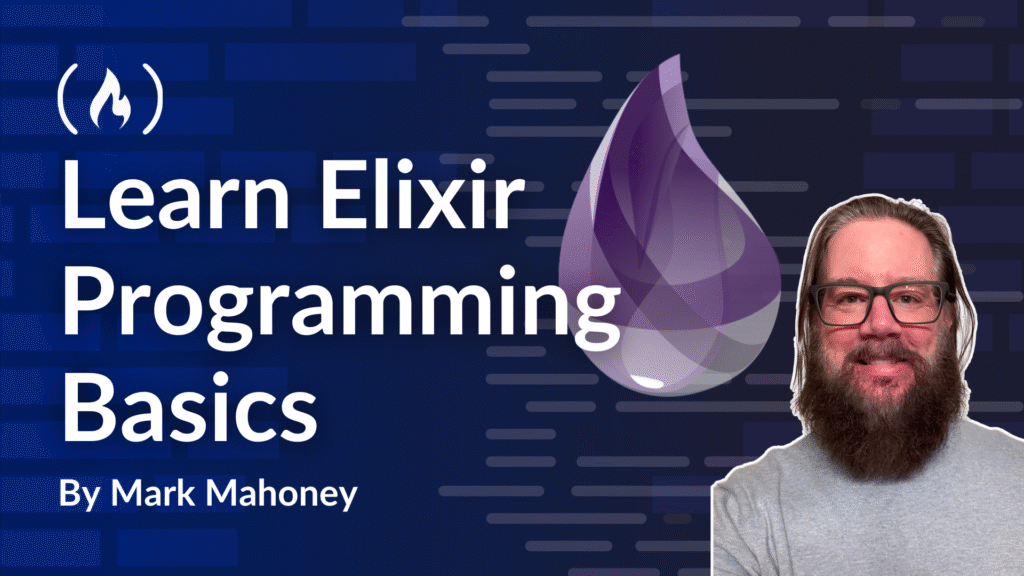Elixir is a dynamic, functional programming language designed for building scalable and maintainable applications. It leverages the battle-tested Erlang VM, known for running low-latency, distributed, and fault-tolerant systems.
Elixir is based on another language called Erlang. Erlang was developed by Ericsson in the 1980s for telecom applications requiring extreme reliability and availability. It includes built-in support for concurrency, distribution, and fault-tolerance. Elixir, created by José Valim, brings a more approachable and expressive syntax to the Erlang VM. It lowers the barrier to entry for using Erlang’s powerful features.
In Elixir, functions are the primary building blocks of programs, similar to how classes and methods are the core units in object-oriented languages. But instead of modeling behavior through stateful objects, functional languages like Elixir treat computation as a series of pure functions that take input and produce output without side effects.
This paradigm offers several benefits:
-
Immutability: Data is immutable by default. Once a variable is bound, it can’t be changed. This avoids hard to track bugs caused by side effects.
-
Functions as first-class citizens: Functions can be assigned to variables, passed as arguments, and returned from other functions. This enables powerful abstractions and code reuse.
-
Pattern matching: Elixir uses pattern matching to bind variables, unpack data structures, and control program flow. This leads to concise and declarative code.
-
Recursion: Looping is typically achieved through recursion. Elixir optimizes recursive calls to avoid stack overflow issues.
While functional programming requires a shift in thinking, it can lead to more predictable and maintainable systems. Elixir makes this paradigm friendly and accessible.
One of Elixir’s standout features is its concurrency model. It uses lightweight processes to achieve massive scalability:
-
Processes are isolated and share no memory, communicating only via message passing.
-
The Erlang VM can run millions of processes concurrently on a single machine.
-
Fault-tolerance is achieved by supervising and restarting failed processes.
This architecture enables building distributed, real-time systems that efficiently use modern multi-core hardware.
An Animated Introduction to Elixir
To make Elixir’s functional and concurrent nature more approachable, I developed an interactive tutorial called “An Animated Introduction to Elixir”. It uses annotated code playbacks to walk through key language features step-by-step. From basic syntax to advanced topics like concurrency, each concept is explained through code and accompanying visuals.
You can access the free ‘book’ of code playbacks here: https://playbackpress.com/books/exbook.
For more info about code playbacks, you can watch a short demo:
Part 1 of the book focuses on core Elixir – syntax basics, pattern matching, functions and modules, key data structures like tuples, maps, lists, functional concepts like closures, recursion, enumeration, and efficient immutability.
Part 2 explores Elixir’s concurrency model – working with processes, message passing between processes, dividing work across processes, and real-world examples and benchmarking. The concepts are applied to practical problems like estimating poker probabilities and generating calendars.
Why Learn Elixir?
Learning Elixir is beneficial for programmers for several compelling reasons. Elixir’s functional paradigm and immutable data structures promote writing cleaner, more predictable, and maintainable code.
Its actor-based concurrency model, built on the robust Erlang VM, enables developing highly scalable, fault-tolerant, and distributed systems that can efficiently leverage multi-core processors and handle massive numbers of simultaneous users. Also, Elixir has a friendly, expressive syntax that lowers the barrier to entry for using these powerful features.
Finally, Elixir has a rapidly growing, vibrant community and ecosystem. For example, the Elixir ecosystem includes powerful web frameworks like Phoenix for building scalable web applications, Nerves for creating embedded software for devices, and Ecto for writing database queries and interacting with different databases.
If you have any questions or feedback, I’d love to hear it. Comments and feedback are welcome anytime: mark@playbackpress.com
Source: freeCodeCamp Programming Tutorials: Python, JavaScript, Git & MoreÂ
